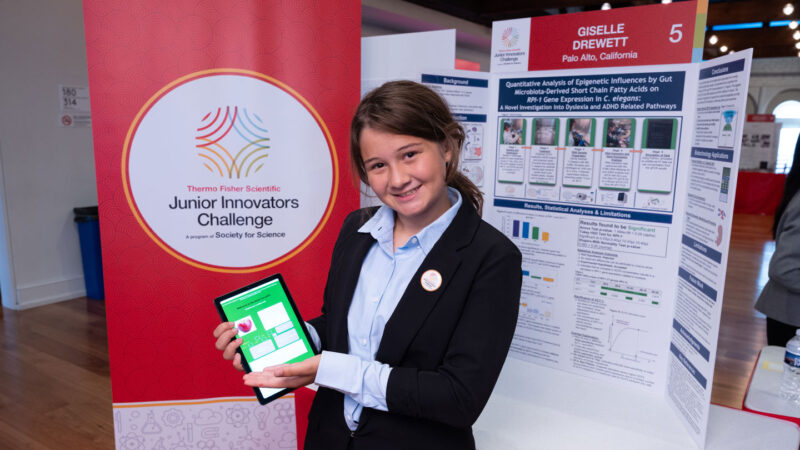You’d be hard-pressed to find a bigger biology fan than 12-year-old Giselle Drewett. Studying biology was the main way she learned to read — a challenge for her, growing up with dyslexia. This is a common learning disability that makes it difficult to process written language.
Inspired by her experience with dyslexia, Giselle wanted to use the power of biology to help people with this condition. And when she took a summer course on genetics, she got an idea for how to do it.
In that class, Giselle learned about epigenetics. This is the way someone’s environment can change how their genes work. She wondered: Could a person’s lifestyle influence genes linked to dyslexia?
Let’s learn about reading
To find out, Giselle looked at short-chain fatty acids. These are molecules in the gut that can be impacted by a person’s diet. Giselle wanted to know whether such diet-controlled molecules might affect a gene called DCDC2. In people, that gene is important for language processing.
In her experiments, Giselle looked at a similar gene in C. elegans worms. The worm version is called RPI-1. When worms were exposed to more short-chain fatty acids, their RPI-1 tended to be less active. That led Giselle to suspect that controlling the amount of short-chain fatty acids in a person’s gut might influence their DCDC2 gene — and therefore their dyslexia.
An aspiring biologist, Giselle did her project as a sixth-grade homeschooler in Palo Alto, Calif. Her research earned her a finalist spot in the 2024 Thermo Fisher Scientific Junior Innovators Challenge. That competition is run by Society for Science, which also publishes Science News Explores. In this interview, Giselle reflects on her science fair experiences.
How did you feel when you first saw your results?
The first time Giselle ran her experiment, the results were not clear. One of her mentors told her that she hadn’t gathered enough data to show a link between short-chain fatty acids and the RPI-1 gene. “I decided to do it with more C. elegans,” Giselle says. This time, the results were clear. “I was really happy, [because] I knew it could help people just like me.”
What’s next for you?
“I was hoping I could look into dyslexia and other environmental factors,” Giselle says. Heat, for instance. Giselle has the sense that she’s met more people with dyslexia since moving to warm California from cold Connecticut. “I don’t know if it’s true,” she says. “So I think that would be very interesting, if I could look into other environmental factors like … heat stress and pollution, which are related to climate change.”
What do you like to do in your spare time?
Giselle loves to draw. She’s created her own original cartoon characters. One is Super Bio-Girl, who fights diseases with genetic engineering. Another character “can basically make cells replicate from a distance,” Giselle says, “and lead to people basically creating prosthetic limbs.”
Why do you love biology?
“I feel like there’s little to no memorization, because they’re all concepts,” Giselle says. “That’s one of the main things dyslexics are actually really good at learning, which is concepts and not words.” Plus, biology research has such great potential to help many people. “There’s huge problems with health, neuroscience — all these biological disorders and diseases,” Giselle says. The people they affect “need somebody to help them.”




